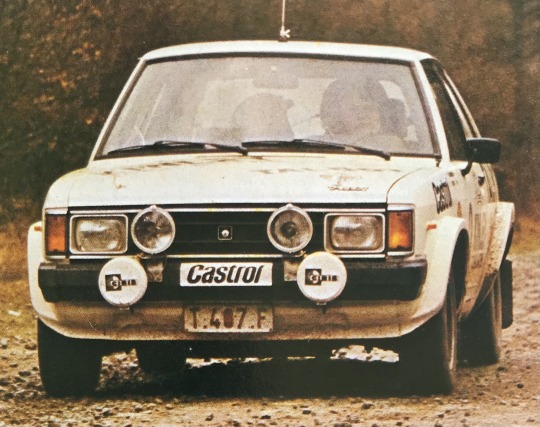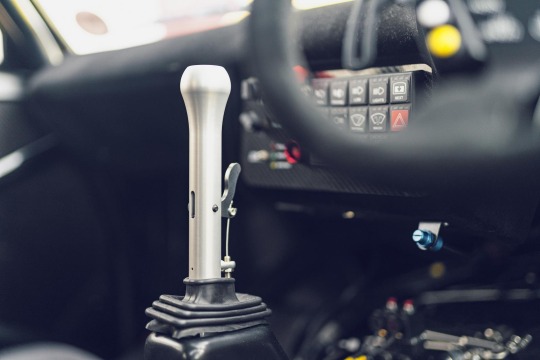#Talbot Lotus Sunbeam
Photo










Jensen GT (1 0f 511).
Following the end of production of the Austin-Healey 3000, which Jensen built the bodies for, San Francisco based Austin-Healey dealer Kjell Qvale was keen to find a new model to take to market.He invested in Jensen Motors, making Donald Healey the chairman, and encouraged a joint venture between Jensen and Healey to develop and build the Jensen-Healey two-seater sports car. Production began in 1972 and continued until 1976, turning out over 10,500 cars.In the early '70s, the oil crisis flattened sales of Jensen's large capacity V8 Interceptor. In response, a 2+2 shooting-brake version of the Jensen-Healey sports car was developed and built during the last two years of production, which was known as the Jensen GT (Donald Healey having by then pulled out of the venture). In an attempt to appeal to buyers conscious of fuel consumption it was marketed as “The Good Thinking Car”.Both variants of the car were powered by the new Lotus 907 engine - from the same inline four-cylinder, 16-valve, dual overhead cam family of engines that would go on to feature in the Eclat and Esprit, as well as the Talbot Lotus Sunbeam and a number of Vauxhall DTV rally cars.This 1973cc engine developed 144 bhp, which was respectable for the time giving a top speed of around 119 mph, slightly lower for the heavier GT, but it lacked torque at low revs. It was mated to a Getrag 5-speed manual gearbox.A combination of industrial action and over-extended production capacity brought about the demise of Jensen Motors, going into receivership in 1975 and eventually exhausting the stock of factory parts to build cars in May 1976.In total, 511 Jensen GTs were produced during just under two years of production. The majority went to North America but 230 were sold in mainland UK.
36 notes
·
View notes
Text

Talbot Lotus 2002 1980. - source Car & Classic.
18 notes
·
View notes
Text




1980 Talbot Sunbeam Lotus
My tumblr-blogs:
www.tumblr.com/germancarssince1946 & www.tumblr.com/frenchcarssince1946 & www.tumblr.com/englishcarssince1946 & www.tumblr.com/italiancarssince1946 & www.tumblr.com/japanesecarssince1947 & www.tumblr.com/uscarssince1935
3 notes
·
View notes
Video
3 - Talbot Sunbeam Lotus by Laurent Quérité
Via Flickr:
Legend Rallye Passion 6th edition Saint Joseph des Bancs Ardèche France IMG_3187
#CanonFrance#Canonphotography#Canon EOS R7#Canon EF 100-400mm f/4.5-5.6L IS USM#Voiture#Automobile#Sport Mécanique#Rallye#Cars#carlovers#carphotography#Légende Rallye Passion#Saint Joseph des Bancs#Ardèche#France#Talbot#Talbot Sunbeam lotus#Laurent Quérité#flickr
3 notes
·
View notes
Text
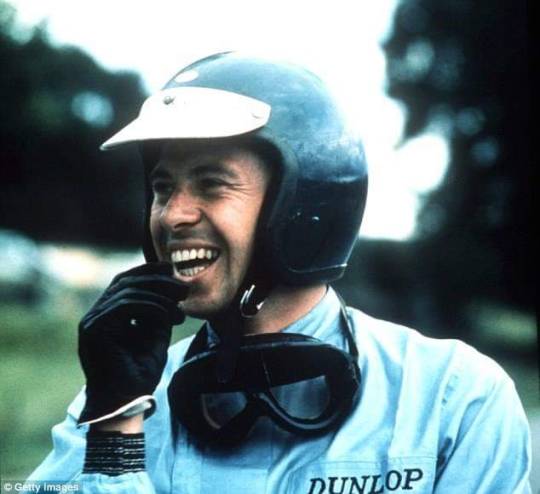



On March 4th 1936 Jim Clark, Formula I World motor racing champion was born in Fife.
Clark was raised on a farm near Duns, close to the border with England along with 4 sisters. After a few years, he was sent to the Loretto School in Musselburgh to finish his education, his main sporting interests being cricket and hockey.
When he was 16, however, his uncle and grandfather both passed away and he was forced to return home. Now, Clark had no dreams of being a racing driver at this point. He knew that it was expected of him, having only sisters, to take over the family business and raise sheep.
One day, in 1956, going to a Young Farmers meeting, Clark overtook another car on his way there. The driver of the overtaken car, Ian Scott-Watson, thought Clark was an idiot for driving as if he was a racing driver and, upon arriving at the Young Farmers meeting, sought out the driver to tell him off. They became best friends in little time and Scott-Watson would be the man responsible for changing Clark’s life completely...
Scott-Watson was doing local racing events in a Sunbeam-Talbot and invited his new best friend to join him. Clark accepted and started tagging along as a mechanic. One time, after Scott-Watson finished his practice for the race the next day, Clark went out to see what driving on a track felt like. And in 5 laps, he was 3 seconds faster than Scott-Watson, who couldn’t believe what he was witnessing. When he got out of the car, Clark asked his friend why everyone was going so slowly. His friend, who still could not believe what he had just seen, explained to Clark that the others were not going slow, he was just going so bloody fast... It really did seem that Clark’s ability to drive was simply something he was born with, a natural talent.
Clark went on to drive through the ranks and by 1959 was driving for the Lotus formula Junior team, about the same time his father talked to him and told him that either his racing hobby would pay for itself or he would have to give it up. Little did he know what was in store for his only son.
In 72 starts Clark was victorious 25 times during his short career, he also won numerous other races, including the prestigious Indianapolis 500. Jim competed and excelled in most forms of driving; in 1964 he was British and French Formula 2 champion and British Saloon Car champion too.
Although more recent drivers have won more races at Formula 1 level Jim was competing in an era where there were only 8-10 Championship races a season. In addition between 1960 and his death he won another 24 non-championship Grand Prix. Another feature of Jim’s ability was that when he did not win he had often not finished the race. In his Grand Prix career he only had one second place. Some of Jim’s wins and minor places were occurred when he was nursing an ailing car and only his ability got it to the finish line.
As I said earlier there were only 8-10 races in Formula One in those days, in 1968 Clark won the first grand prix in South Africa, there was however more than four months until the next big race in Spain, drivers filled the time driving in lesser races, and so it was that he ended up driving in a Formula Two race at a wet Hockenheim on 7 April 1968.
The Lotus, he was driving, on Firestone tyres was poor in the rain, and uncompetitive, unusually for him Clark was neither a front-runner nor making ground on those who were.
Then something went wrong at the fast Ostkurve. There were no barriers and Clark's car plunged at full speed into the trees, where he was killed instantly.
Fellow Scot Jackie Stewart is still angered by the crash ad the memories it brings saying, "Jim Clark died almost certainly because of a vehicle failure of some kind,There was no barrier, no fencing in front of a forest. And Jim Clark died violently in a forest, being hit by young trees and big trees alike, and his car was almost totally destroyed. And Jimmy died. It just was inconceivable."
In the most tragic of circumstances, then, Clark helped define the future of the sport, as well as bestriding like a colossus part of its past.
Clark was trying to win his third title and retire. He talked to the other drivers that he was starting to worry about what he would do once he stopped racing, since he knew he could not do it forever, even if he really did enjoy racing, and he would have to stop at some point, go back to Scotland and raise a family.
He also confided in Stewart, who by then was a very known advocate for safety in racing, that he did think of the dangers sometimes, especially if there were trees around a track.
18 notes
·
View notes
Text





HENRI TOIVONEN and FRED WHITE in #16 Talbot Sunbeam Lotus at 1980 LOMBARD RAC RALLY.
(Oh yeah and also he became the youngest person to ever win a rally at that time.)
#this is just an excuse to show the last pic which i have found. thank you to that one person who stored like 1000 pics of henri lmao.#anyway look at him all smiley and happy and silly and goofy and enjoying the win#rally#cars#henri toivonen
13 notes
·
View notes
Text

Talbot Sunbeam Lotus rally car
68 notes
·
View notes
Text
0 notes
Photo

Stig Blomqvist
#WRC#Stig Blomqvist#Talbot#Talbot Sunbeam#Talbot Sunbeam Lotus#Lotus Sunbeam#Talbot Lotus Sunbeam#Rallying#Rally#Rally Driver#Rally Driving#Maximum Attack#Talbot Lotus#Drift#Drifter#Drifting#Sideways#Oversteer#Opposite Lock#RAC Rally#World Rally Championship#RWD#Rear Wheel Drive#2WD#Rally Car#Group 4#Swedish#Sweden#Scandinavian#Scandinava
48 notes
·
View notes
Text

Talbot Sunbeam Lotus S2 1982. 📸 Bring a Trailer. - source Rétro Passion Automobiles.
24 notes
·
View notes
Text

82’ Talbot Sunbeam Lotus Hatchback
#stance#modified#tuning#retro rides#tuner#slammed#street#imports#lowered#uncommon car#oddballs#fitment#static#talbot sunbeam Lotus#hatchback#80s cars
67 notes
·
View notes
Video
Talbot Sunbeam Lotus 2.2 Gr.4 by Demolition Man
Via Flickr:
Lessinia Históric Rally 2023
5 notes
·
View notes
Photo
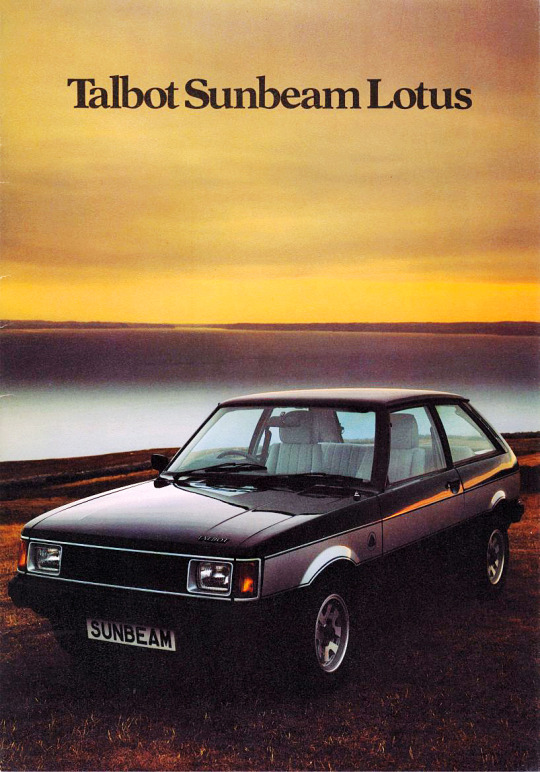


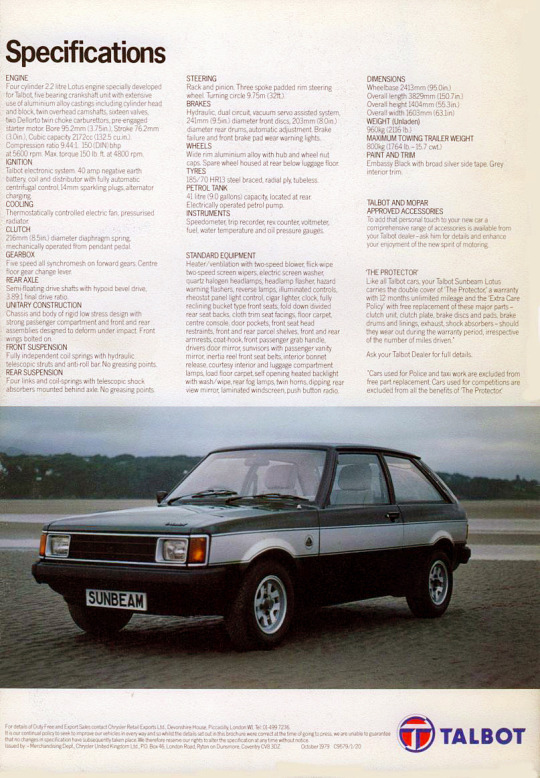
Talbot Sunbeam Lotus, 1979. The Chrysler Sunbeam was a rear wheel drive 3 door hatchback that had been developed with UK government assistance in an attempt to keep Chrysler’s Linwood plant in Scotland open. When Peugeot took over Chrysler Europe it became a Talbot Sunbeam. A high performance version was developed for rallying powered by a Lotus 2.2 litre TOHC 16 valve engine but was also made for the road
#Talbot#Talbot Sunbeam#Talbot Sunbeam Lotus#1979#TOHC#Lotus engine#rear wheel drive#brochure#Chrysler Sunbeam#dead brands
136 notes
·
View notes
Photo

Talbot Sunbeam Lotus-Avon 1983
#talbot#sunbeam#talbot sunbeam#cars#coches#coche#car#auto#carro#lotus#1983#Reino Unido#united kingdom#uk#hatchback
39 notes
·
View notes


